 June 2021
mni
pejuta tokaheya heca.
Water was
Water is
our first medicine.
The water was part of the land.
And therefore part of the people.
And in this place,
We flourished.
~Gwen Westerman
Excerpt from De Wakpa Taŋka Odowaŋ
 You too can get this spectacular view of Big Bog Lake after a half-mile walk on the bog boardwalk at Lake Bemidji State Park. PHOTO CREDIT: Naturalist Christa Drake
Minnesota has over 6 million acres of peatlands. More than any other state in the U.S. besides Alaska. The peatlands that cover 10% of Minnesota began to form 5,000-6,000 years ago when the climate cooled and precipitation increased significantly. Peatlands are among the most valuable ecosystems on Earth: They're critical for preserving global biodiversity, provide safe drinking water, minimize flood risk and help address climate change.
Let's geek out on definitions. A peatland is a type of wetland that can be either a bog or a fen. A bog, also known as a "quagmire," is a peatland that gets nutrients solely from precipitation and wind-blown dust. The Ojibwe (Anishinaabe) word for bog is mashkiig /mush-keeg/, which means "medicine from the earth." A fen gets nutrients from groundwater. Water tracks are fen areas in peatlands that look like river channels.
We hope this piqued your interest and you'll scroll down to learn about the incredible resource that are peatlands.

Bogs develop where peat builds up over time and the peat surface becomes elevated, isolating it from mineral-rich runoff or groundwater.
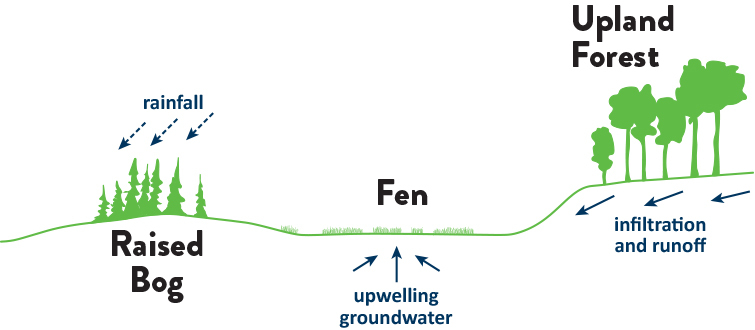 Water flow and sources in bogs and fens. Precipitation and temperature affect how bogs form, how long they are around and the kinds of plants and animals living in them.
The area becomes waterlogged because precipitation exceeds evaporation due to poor drainage. This saturates dead plant material, leading to low oxygen (anoxic) conditions not conducive to decomposition. The continuous build-up of dead plant material is called "peat."
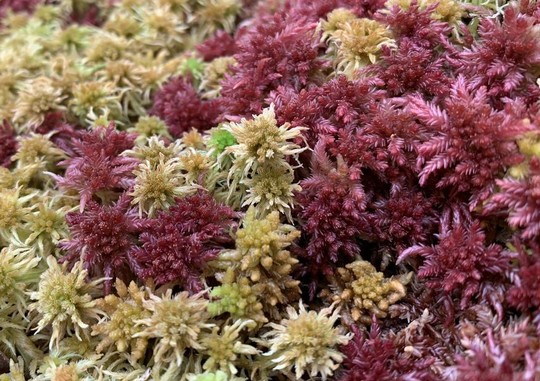 Sphagnum moss (or peat moss) is the type of moss that grows in a bog and is part of peat. It absorbs and holds onto a lot of water and is one of the predominant species on the ground layer.
Fens appear like saturated meadows, with abundant sedges, rushes and other grasslike plants, as well as occasional shrubs, and scattered stunted trees, such as tamarack.
They form where groundwater wells up strongly, through the peat layer creating a network of narrow channels that flow through and dissect black spruce and tamarack swamp forest. The channels often rejoin as they flow, creating small, linear-shaped swamp forest islands.
More about peatland science.
Peatlands play a major role in combatting climate change. The protection and restoration of peatlands is vital in the transition towards a low-carbon and circular economy.
By accumulating dead organic matter as peat, peatlands sequester carbon — in fact, more carbon than all other vegetation types in the world combined! They can store that excess carbon for thousands of years. Peatlands filter water, taking toxins and excess nutrients out of runoff. They also act like sponges helping with flood mitigation.
More from IUCN (International Union for Conservation of Nature)
For the Love of Peat (99% Invisible podcast)
How Peat Could Protect the Planet (from Nature.com)
Few plants and animals have adapted to the very acidic water conditions of bogs.
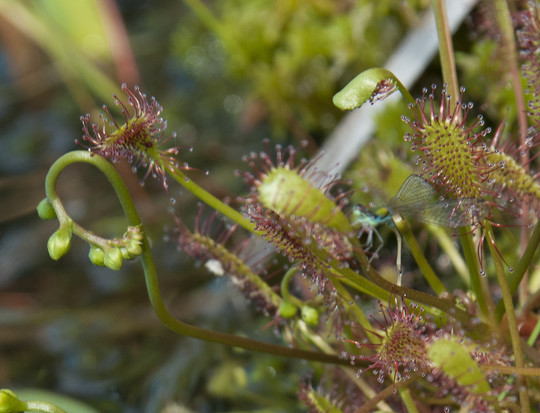 Spoon-leaf sundew. Sundews lure insects using stalked glands covered with droplets of very sticky secretions that resemble morning dew. PHOTO CREDIT: Kelly Povo
Plants
Bogs may either be forested (black spruce, tamarack) or open (no trees or scattered, short trees). Many of their native plants are on Minnesota's endangered or threatened species list. Predominant plants include leatherleaf, purple pitcher plant, sphagnum moss, bog rosemary, bog laurel, bog rush and cotton grass. Among the bog flowers are a variety of orchids (showy lady's slippers, dragon's mouth, grass-pink) and insect-eating sundews (English, linear-leaved, round-leaved, spoon-leaf).
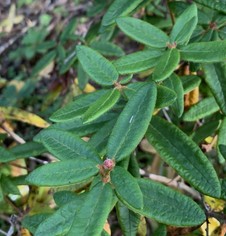
Labrador or "swamp tea" (mashkiigobag in Ojibwe, pictured) is one of the many medicinal plants found in bogs. Other bog plants have traditionally been used for a variety of applications: Black spruce roots to make birch bark canoes; sphagnum moss for diapers; tamarack roots woven into bags.
|
Animals: Vertebrates and Invertebrates
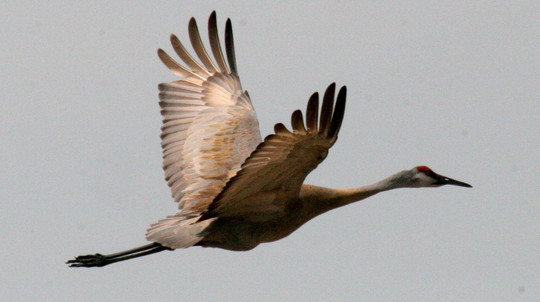 Sandhill crane in flight. PHOTO COPYRIGHT: Carrol Henderson
Great destinations for birders and other nature observers, peatlands are home to the following wild creatures: northern bog lemming, hawk owl, sandhill crane, shrews, voles, mice, Connecticut warbler, Wilson's phalarope, common yellowthroat, grouse, frogs, toads, great gray owl and salamanders. Among the insects, you'll find mosquitos (duh!), dragonflies, deerflies, damselflies and several butterflies and moths.
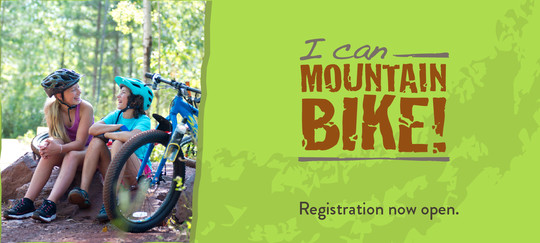

Walk the mile-long boardwalk to take look at the unique plant and animal life of the largest peat bog in the lower 48 states.
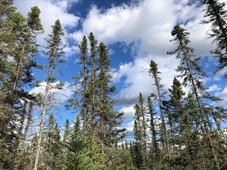
Sometimes, fens are interspersed within bogs, as is the case at Big Bog State Recreation Area (SRA). From orchids to carnivorous plants to rare birds and reptiles and amphibians, a mixture of fascinating and rare resources inhabit this peatland.
Click the photo to take a virtual tour of the SRA.
|
Some days it's just you, loons and moose: This park offers access to hundreds of square miles of untamed land.

Hayes Lake State Park is on the western perimeter of vast, sparsely populated wildlands within Beltrami Island State Forest. From the high points, you can see how water has cut, gouged and eroded a steep, U-shaped, small floodplain valley. In summer, orchids, gentians, and blueberries abound (pick the berries, not the flowers). As water-based recreation sites were a priority in the area in the late 1960s, a dam was built on the Roseau River to create Hayes Lake.
|
The Ojibwe name for the lake is "Bemiji-gau-maug," meaning cutting sideways through or diagonally, a reference to the path of the Mississippi River through the lake.
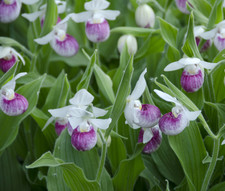
Lake Bemidji State Park is the perfect playground any time of year. Enjoy swimming and boating in the summer, and snowmobiling and cross-country skiing in the winter. In late spring and early summer, discover the blooming flowers of the bog, also home to some of Minnesota's most unusual plants and animals.
The ancestors to the Dakota fished and hunted around Lake Bemidji for hundreds of years. The Ojibwe reached the area around 1750.
Click the photo for a virtual tour of the park.
|

Partly due to the challenge of adapting to the environment, peatlands are very fragile. A footprint can last a whole summer; a trail could last decades. Stepping on peatland soil could be damaging to unique plants, too. Stay on designated boardwalks and leave the plants and flowers for others and for wildlife to enjoy. You're an observer here — admire the rare species of plants and animals, take photos, relax.

(1) Peatland Scientific Natural Areas (SNAs)
Scientific and Natural Areas (SNAs) exist to protect largely undisturbed natural landscapes, outstanding biodiversity and high-quality native plant communities. Due to their purpose, they are not easy to explore and lack amenities like restrooms or trails and sometimes even parking lots.
Peatland SNAs are especially difficult to explore because:
- They are BIG (like several thousand acres big).
- They are wet, wet, wet (ever had a boot sucked off your foot?).
- They are hard to traverse (see above).
- They have a lot of biting insects (“a lot” may be an understatement).
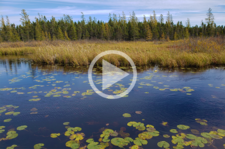
The shallow, acidic Black Lake and surrounding wetlands are the source of the Black River, a tributary to the Nemadji River. The Gandy Dancer State Trail is adjacent to the SNA, and a good vantage point to observe the wildlife of the bog and fen of this site.
|
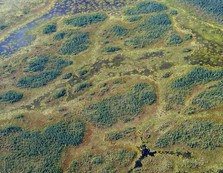
This is the largest and most diversely patterned boreal peatland in the country. The patterns were shaped over thousands of years by slow-moving water and its nutrients. It's been used for research ranging from methane production, to carbon sequestration, to sensitivity of peatlands, to climate change.
Aerial peatland patterns at Red Lake Peatland SNA. PHOTO CREDIT: Erica Rowe
More information and full list of peatland SNAs.
|
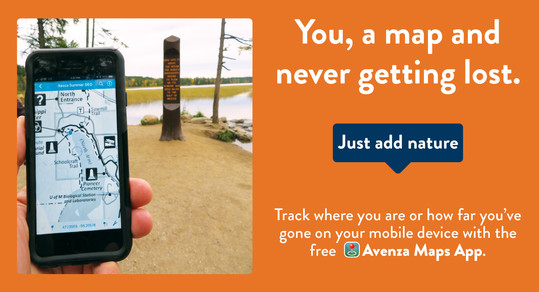
(2) Peatland State Forests
Minnesota state forests are open for all to enjoy. Try dispersed camping or find a campground. Discover miles of trails for hiking, hunting, mountain biking, OHV riding, cross-country skiing, snowshoeing, horseback riding and more.
Beltrami Island State Forest
The "island" in the name refers to small, teardrop-shaped islands surrounded by miles of peat bogs. Within the boundaries of this state forest are seven SNAs, the state's largest wildlife management area (WMA), Hayes Lake State Park and Big Bog State Recreation Area. Five rivers — the Roseau, Warroad, Rapid, Winter Road and Moose — have their headwaters here. More
Smokey Bear State Forest

Over 10,000 years ago, Glacial Lake Aggasiz flooded much of this area. As the shallow lake retreated, receding waters left clayey to loamy soils and peat deposits. Vast bogs now surround "islands" and ridges of black spruce, cedar, tamarack and pine. The landscape is mostly flat, containing several peatlands, and drained by several streams and the Little Fork and Big Fork rivers. More
|

Services and facilities now available:
- All camping and lodging sites, with more bathrooms and shower buildings available for public use.
- Most buildings and support facilities open in some capacity.
-
Naturalist programming is available at many locations, with preregistration to limit capacity.
-
I Can! program reservations are open.
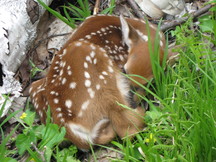
Most fawns are born between mid-May and mid-June. During their first few weeks of life, they don't attempt to evade predators. Instead, they remain still to avoid being seen. If you see a fawn alone, leave it alone: It's busy learning critical survival skills from its mother, who is often foraging nearby. Deer fawns do fine even if they appear abandoned or fragile.
More on baby animals: If You Care, Leave it There.
|
 The faces and stories of our visitors and staff.
"Make your relationship with nature one that works for you. If hiking hundreds of rugged miles doesn’t appeal to you, but a one-mile stroll at a nearby park brings you joy, embrace it, and know that you are a legit hiker too!"
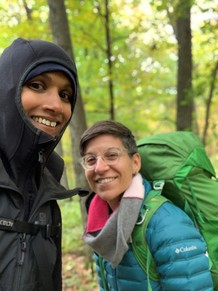
I’ve experienced racism, sexism, homophobia, classism and ableism when spending time outdoors. Knowing how beneficial nature is to our collective physical and mental well-being, I’ve spent the last several years working to create outdoor spaces and programs for and with folks who have also experienced the “isms” and who haven’t felt welcomed in the outdoors. Every outing I coordinate is done in a meaningful, accessible, sustainable and empowering way, particularly for Black, Indigenous and People of Color (BIPOC) and the Lesbian, Gay, Bisexual, Trans and Queer (LGBTQ) communities, and others traditionally excluded, whether due to limited mobility, experience or resources.
Find your own adventure and relationship with nature. The amazing landscape here in Minnesota allows for so many different outdoor activities! Myself, if I’m not paddling, running a trail, or camping with my partner Andrea or my nephews, you might find me along the Mississippi River or Minnehaha Creek with my laptop, a chair and a mobile hotspot.
Visitors to Minnesota state parks are overwhelmingly white. A task force recommends a new office to make parks more inviting to diverse users. Read on Sahan News.
|
|